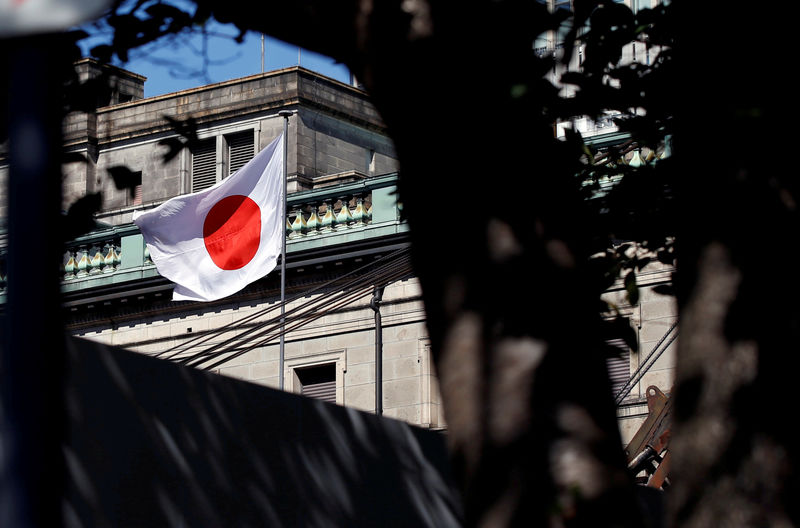 © Reuters. FILE PHOTO: A Japanese flag flutters atop the Bank of Japan building under construction in Tokyo
© Reuters. FILE PHOTO: A Japanese flag flutters atop the Bank of Japan building under construction in TokyoBy Leika Kihara
TOKYO (Reuters) – The Bank of Japan is set to keep monetary policy steady and roughly maintain its ambitious price forecasts on Tuesday, pointing to signs of growing strength in the economy that policymakers hope will accelerate inflation towards its elusive 2 percent target.
But Goushi Kataoka, a newcomer to the board, may propose ramping up stimulus after dissenting last month to a decision to stand pat on policy, setting back the BOJ’s quest to dial back its massive monetary support, analysts say.
At the two-day meeting ending on Tuesday, the BOJ is set to keep intact a pledge to guide short-term interest rates at minus 0.1 percent and the 10-year bond yield around zero percent.
The market’s focus would be on whether Kataoka will propose expanding stimulus. While any such proposal is likely to be voted down, it may expose a rift in the nine-member board on the future direction of monetary policy.
“If Kataoka proposes additional easing, that would be an important turning point for future debate on monetary policy,” said Yasunari Ueno, chief market economist at Mizuho Securities.
“The proposal could mark a starting point for shifting the debate within and outside the BOJ, from seeking an exit from easy policy to strengthening stimulus,” he said.
BOJ Governor Haruhiko Kuroda will likely hold a briefing at 3:30 p.m. (0630 GMT) to explain the policy decision.
In a quarterly review of its projections, the BOJ is seen trimming its inflation forecast for the current year ending in March 2018 from the 1.1 percent it estimated made in July, sources say.
The bank is seen roughly maintaining its price forecasts for fiscal 2018 and 2019, as well as its view that inflation will hit the 2 percent target by March 2020, they said.
The BOJ currently projects inflation will hit 1.5 percent in fiscal 2018 and 1.8 percent the following year.
Japan’s economy expanded at an annualized 2.5 percent in the second quarter as consumer and corporate spending picked up, with steady growth likely to be sustained in coming quarters.
But core consumer prices rose just 0.7 percent in September from a year earlier, well below the BOJ’s target, keeping the bank under pressure to maintain ultra-easy policy even as its U.S. and European peers begin to scale back their stimulus.
Fusion Media or anyone involved with Fusion Media will not accept any liability for loss or damage as a result of reliance on the information including data, quotes, charts and buy/sell signals contained within this website. Please be fully informed regarding the risks and costs associated with trading the financial markets, it is one of the riskiest investment forms possible.
Source: Investing.com



























